geom_segment() 在點 (x, y) 和 (xend, Yend) 之間繪製一條直線。 geom_curve() 繪製一條曲線。有關控製曲線的參數,請參閱底層繪圖函數grid::curveGrob()。
用法
geom_segment(
mapping = NULL,
data = NULL,
stat = "identity",
position = "identity",
...,
arrow = NULL,
arrow.fill = NULL,
lineend = "butt",
linejoin = "round",
na.rm = FALSE,
show.legend = NA,
inherit.aes = TRUE
)
geom_curve(
mapping = NULL,
data = NULL,
stat = "identity",
position = "identity",
...,
curvature = 0.5,
angle = 90,
ncp = 5,
arrow = NULL,
arrow.fill = NULL,
lineend = "butt",
na.rm = FALSE,
show.legend = NA,
inherit.aes = TRUE
)參數
- mapping
-
由
aes()創建的一組美學映射。如果指定且inherit.aes = TRUE(默認),它將與繪圖頂層的默認映射組合。如果沒有繪圖映射,則必須提供mapping。 - data
-
該層要顯示的數據。有以下三種選擇:
如果默認為
NULL,則數據繼承自ggplot()調用中指定的繪圖數據。data.frame或其他對象將覆蓋繪圖數據。所有對象都將被強化以生成 DataFrame 。請參閱fortify()將為其創建變量。將使用單個參數(繪圖數據)調用
function。返回值必須是data.frame,並將用作圖層數據。可以從formula創建function(例如~ head(.x, 10))。 - stat
-
用於該層數據的統計變換,可以作為
ggprotoGeom子類,也可以作為命名去掉stat_前綴的統計數據的字符串(例如"count"而不是"stat_count") - position
-
位置調整,可以是命名調整的字符串(例如
"jitter"使用position_jitter),也可以是調用位置調整函數的結果。如果需要更改調整設置,請使用後者。 - ...
-
其他參數傳遞給
layer()。這些通常是美學,用於將美學設置為固定值,例如colour = "red"或size = 3。它們也可能是配對的 geom/stat 的參數。 - arrow
-
箭頭規範,由
grid::arrow()創建。 - arrow.fill
-
用於箭頭的填充顏色(如果關閉)。
NULL意味著使用colour美學。 - lineend
-
線端樣式(圓形、對接、方形)。
- linejoin
-
線連接樣式(圓形、斜接、斜角)。
- na.rm
-
如果
FALSE,則默認缺失值將被刪除並帶有警告。如果TRUE,缺失值將被靜默刪除。 - show.legend
-
合乎邏輯的。該層是否應該包含在圖例中?
NA(默認值)包括是否映射了任何美學。FALSE從不包含,而TRUE始終包含。它也可以是一個命名的邏輯向量,以精細地選擇要顯示的美學。 - inherit.aes
-
如果
FALSE,則覆蓋默認美學,而不是與它們組合。這對於定義數據和美觀的輔助函數最有用,並且不應繼承默認繪圖規範的行為,例如borders()。 - curvature
-
給出曲率量的數值。負值產生左手曲線,正值產生右手曲線,零產生直線。
- angle
-
0 到 180 之間的數值,給出曲線控製點的傾斜量。小於 90 的值使曲線向起點傾斜,大於 90 的值使曲線向終點傾斜。
- ncp
-
用於繪製曲線的控製點的數量。更多控製點可創建更平滑的曲線。
細節
兩種幾何圖形都為每種情況繪製一條線段/曲線。如果您需要跨多個案例連接點,請參閱geom_path()。
美學
geom_segment() 理解以下美學(所需的美學以粗體顯示):
-
x -
y -
xend -
yend -
alpha -
colour -
group -
linetype -
linewidth
在 vignette("ggplot2-specs") 中了解有關設置這些美學的更多信息。
也可以看看
geom_path() 和 geom_line() 用於多段線和路徑。
geom_spoke() 用於由位置 (x, y) 以及角度和半徑參數化的線段。
例子
b <- ggplot(mtcars, aes(wt, mpg)) +
geom_point()
df <- data.frame(x1 = 2.62, x2 = 3.57, y1 = 21.0, y2 = 15.0)
b +
geom_curve(aes(x = x1, y = y1, xend = x2, yend = y2, colour = "curve"), data = df) +
geom_segment(aes(x = x1, y = y1, xend = x2, yend = y2, colour = "segment"), data = df)
 b + geom_curve(aes(x = x1, y = y1, xend = x2, yend = y2), data = df, curvature = -0.2)
b + geom_curve(aes(x = x1, y = y1, xend = x2, yend = y2), data = df, curvature = -0.2)
 b + geom_curve(aes(x = x1, y = y1, xend = x2, yend = y2), data = df, curvature = 1)
b + geom_curve(aes(x = x1, y = y1, xend = x2, yend = y2), data = df, curvature = 1)
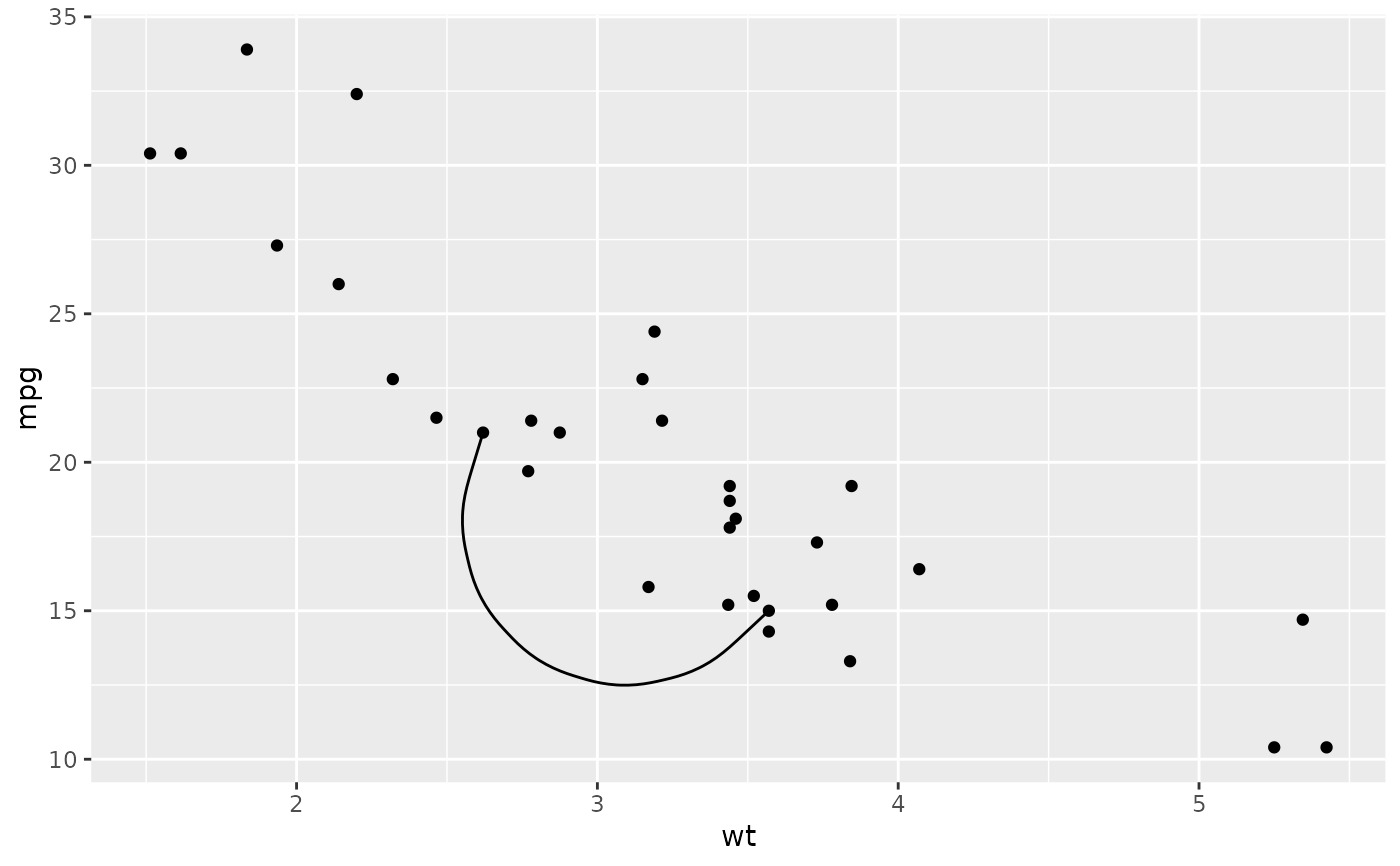 b + geom_curve(
aes(x = x1, y = y1, xend = x2, yend = y2),
data = df,
arrow = arrow(length = unit(0.03, "npc"))
)
b + geom_curve(
aes(x = x1, y = y1, xend = x2, yend = y2),
data = df,
arrow = arrow(length = unit(0.03, "npc"))
)
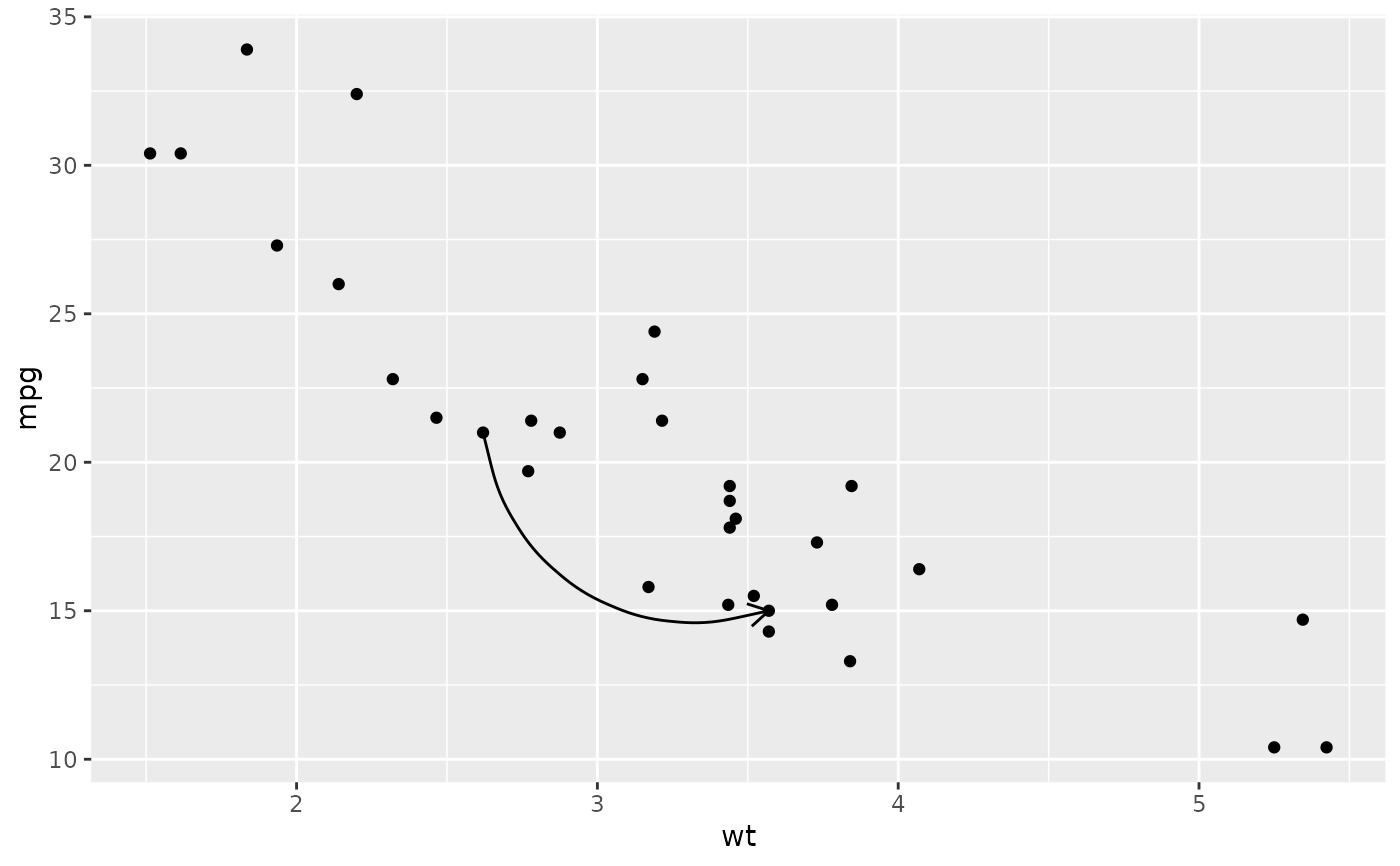 if (requireNamespace('maps', quietly = TRUE)) {
ggplot(seals, aes(long, lat)) +
geom_segment(aes(xend = long + delta_long, yend = lat + delta_lat),
arrow = arrow(length = unit(0.1,"cm"))) +
borders("state")
}
if (requireNamespace('maps', quietly = TRUE)) {
ggplot(seals, aes(long, lat)) +
geom_segment(aes(xend = long + delta_long, yend = lat + delta_lat),
arrow = arrow(length = unit(0.1,"cm"))) +
borders("state")
}
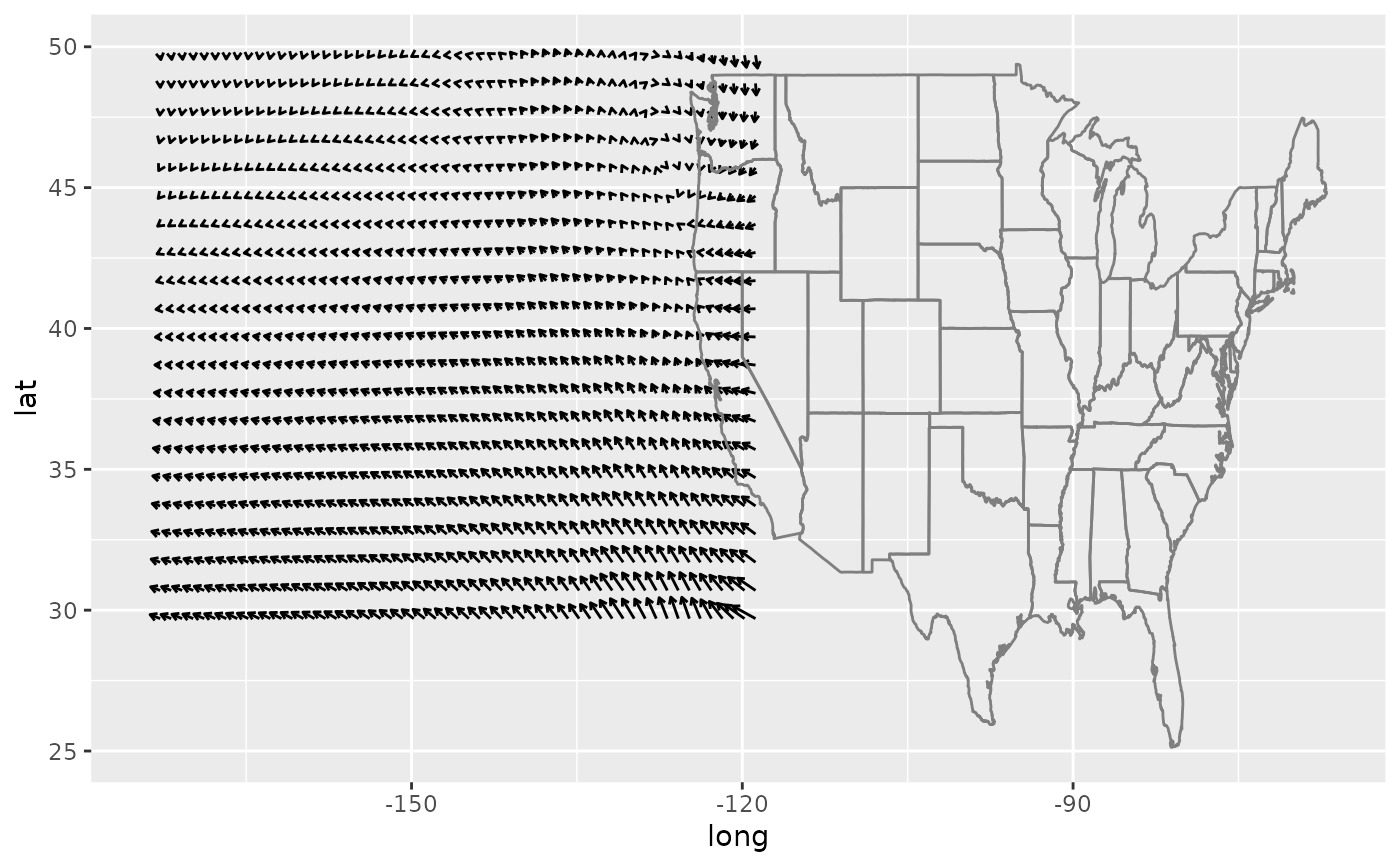 # Use lineend and linejoin to change the style of the segments
df2 <- expand.grid(
lineend = c('round', 'butt', 'square'),
linejoin = c('round', 'mitre', 'bevel'),
stringsAsFactors = FALSE
)
df2 <- data.frame(df2, y = 1:9)
ggplot(df2, aes(x = 1, y = y, xend = 2, yend = y, label = paste(lineend, linejoin))) +
geom_segment(
lineend = df2$lineend, linejoin = df2$linejoin,
size = 3, arrow = arrow(length = unit(0.3, "inches"))
) +
geom_text(hjust = 'outside', nudge_x = -0.2) +
xlim(0.5, 2)
# Use lineend and linejoin to change the style of the segments
df2 <- expand.grid(
lineend = c('round', 'butt', 'square'),
linejoin = c('round', 'mitre', 'bevel'),
stringsAsFactors = FALSE
)
df2 <- data.frame(df2, y = 1:9)
ggplot(df2, aes(x = 1, y = y, xend = 2, yend = y, label = paste(lineend, linejoin))) +
geom_segment(
lineend = df2$lineend, linejoin = df2$linejoin,
size = 3, arrow = arrow(length = unit(0.3, "inches"))
) +
geom_text(hjust = 'outside', nudge_x = -0.2) +
xlim(0.5, 2)
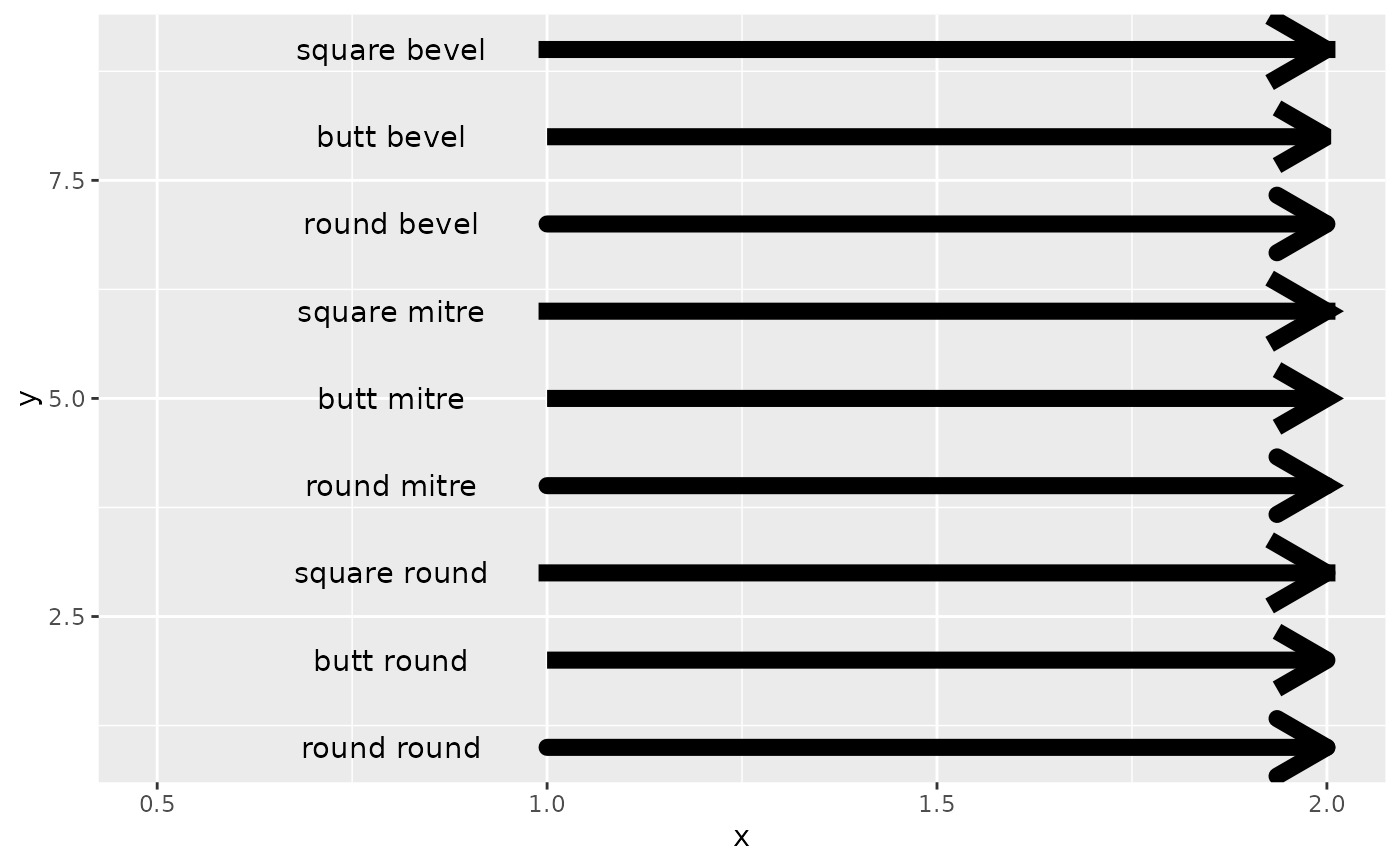 # You can also use geom_segment to recreate plot(type = "h") :
set.seed(1)
counts <- as.data.frame(table(x = rpois(100,5)))
counts$x <- as.numeric(as.character(counts$x))
with(counts, plot(x, Freq, type = "h", lwd = 10))
# You can also use geom_segment to recreate plot(type = "h") :
set.seed(1)
counts <- as.data.frame(table(x = rpois(100,5)))
counts$x <- as.numeric(as.character(counts$x))
with(counts, plot(x, Freq, type = "h", lwd = 10))
 ggplot(counts, aes(x, Freq)) +
geom_segment(aes(xend = x, yend = 0), linewidth = 10, lineend = "butt")
ggplot(counts, aes(x, Freq)) +
geom_segment(aes(xend = x, yend = 0), linewidth = 10, lineend = "butt")
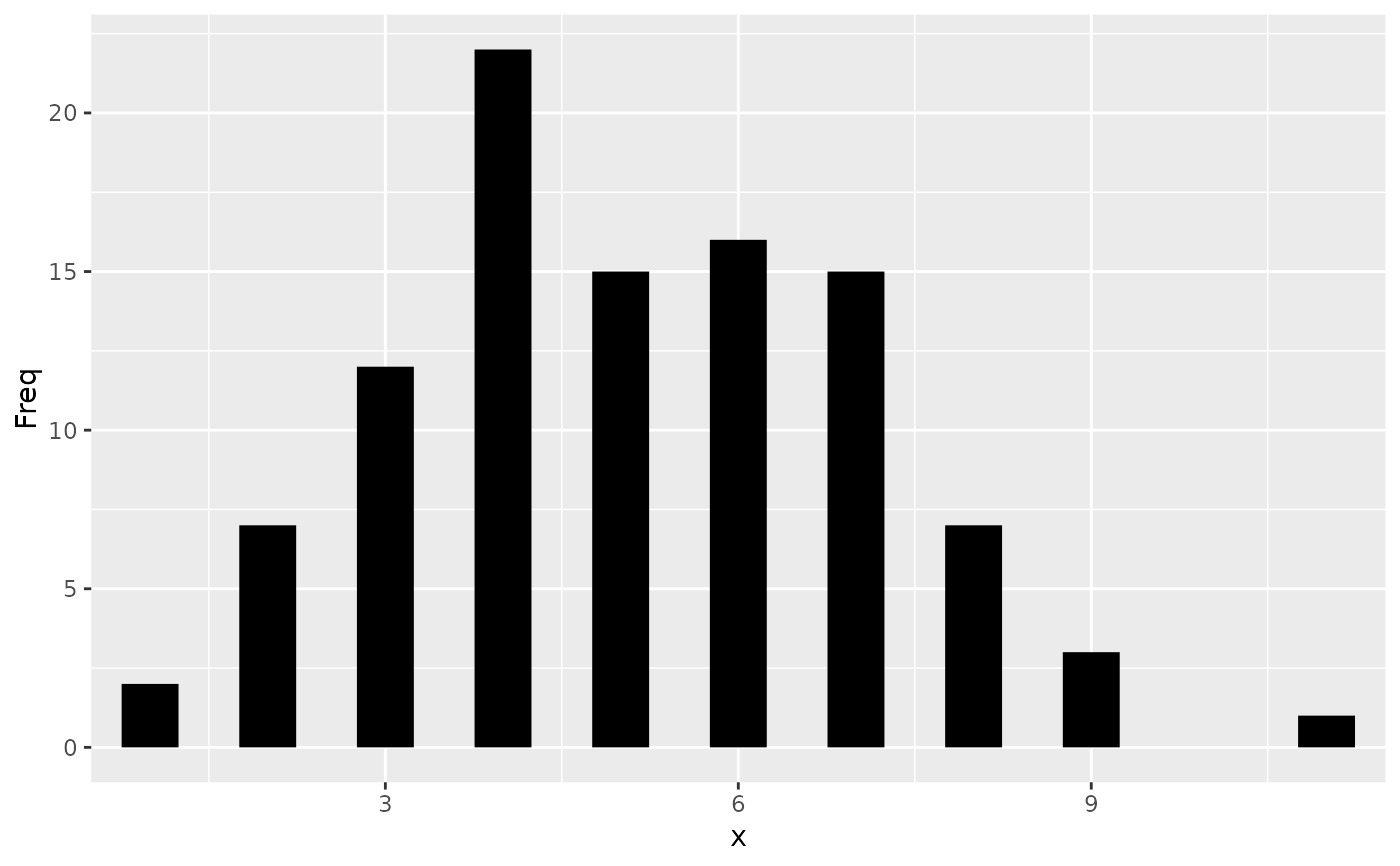
相關用法
- R ggplot2 geom_spoke 由位置、方向和距離參數化的線段
- R ggplot2 geom_smooth 平滑條件均值
- R ggplot2 geom_qq 分位數-分位數圖
- R ggplot2 geom_quantile 分位數回歸
- R ggplot2 geom_text 文本
- R ggplot2 geom_ribbon 函數區和麵積圖
- R ggplot2 geom_boxplot 盒須圖(Tukey 風格)
- R ggplot2 geom_hex 二維箱計數的六邊形熱圖
- R ggplot2 geom_bar 條形圖
- R ggplot2 geom_bin_2d 二維 bin 計數熱圖
- R ggplot2 geom_jitter 抖動點
- R ggplot2 geom_point 積分
- R ggplot2 geom_linerange 垂直間隔:線、橫線和誤差線
- R ggplot2 geom_blank 什麽也不畫
- R ggplot2 geom_path 連接觀察結果
- R ggplot2 geom_violin 小提琴情節
- R ggplot2 geom_dotplot 點圖
- R ggplot2 geom_errorbarh 水平誤差線
- R ggplot2 geom_function 將函數繪製為連續曲線
- R ggplot2 geom_polygon 多邊形
- R ggplot2 geom_histogram 直方圖和頻數多邊形
- R ggplot2 geom_tile 矩形
- R ggplot2 geom_density_2d 二維密度估計的等值線
- R ggplot2 geom_map 參考Map中的多邊形
- R ggplot2 geom_density 平滑密度估計
注:本文由純淨天空篩選整理自Hadley Wickham等大神的英文原創作品 Line segments and curves。非經特殊聲明,原始代碼版權歸原作者所有,本譯文未經允許或授權,請勿轉載或複製。
